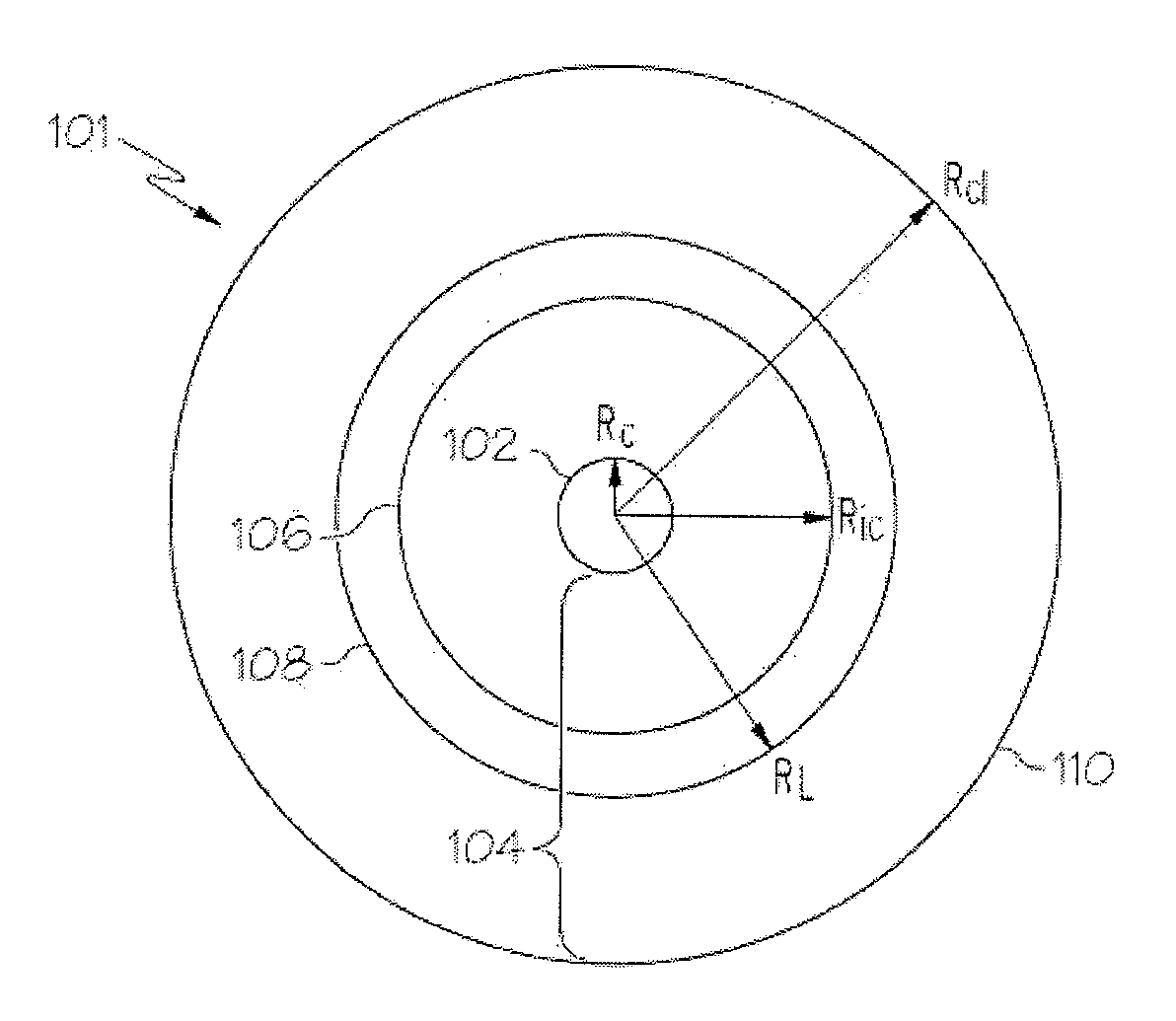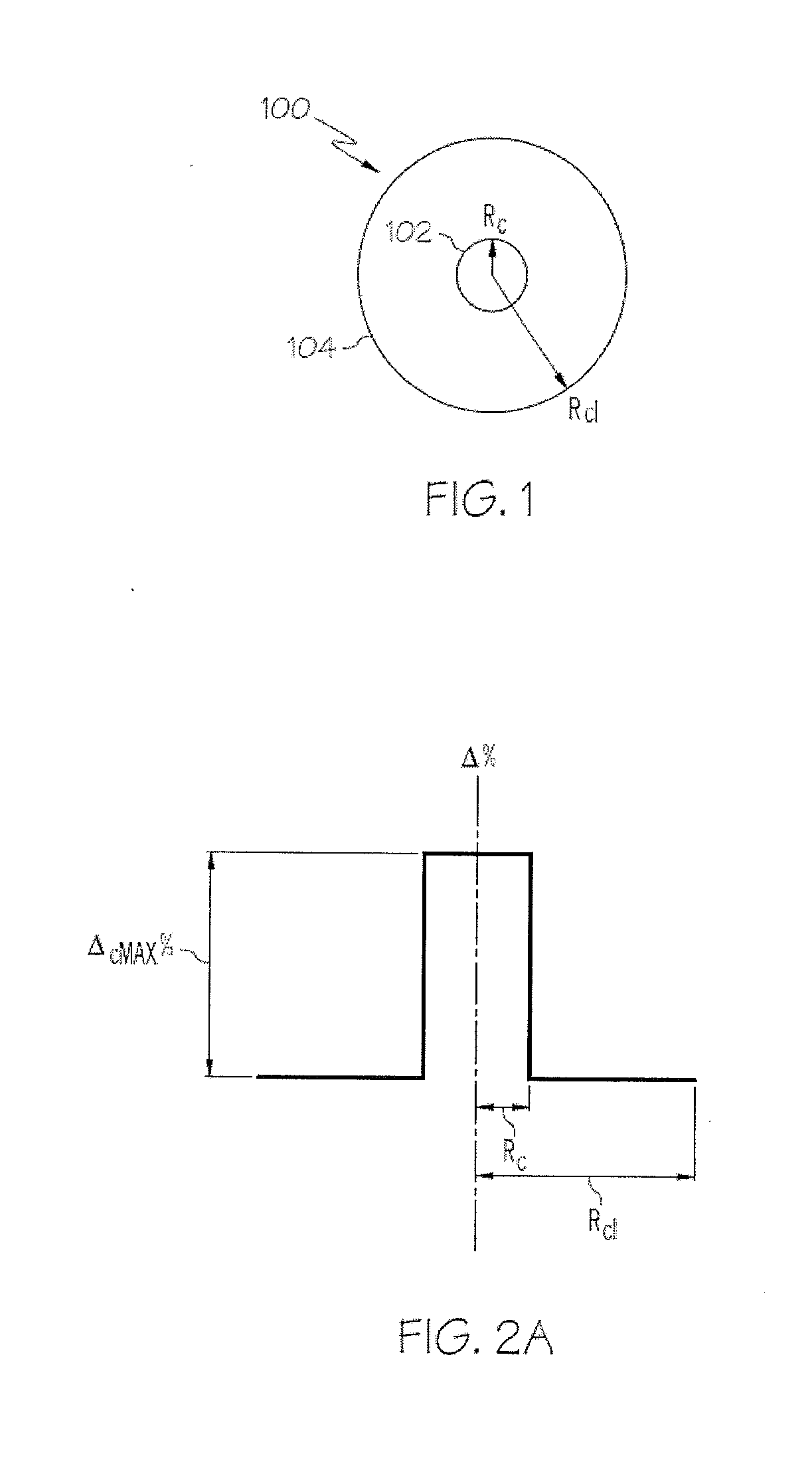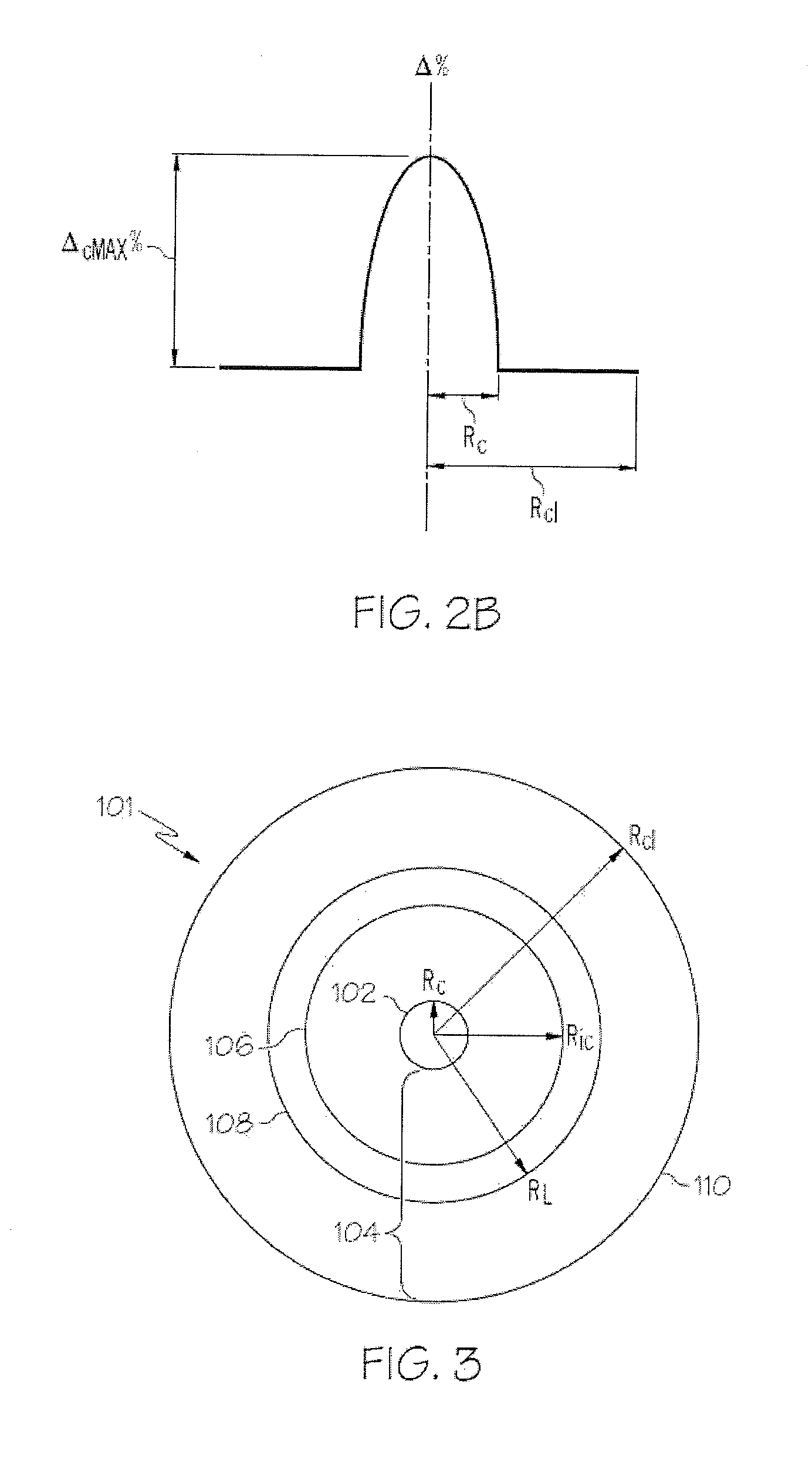Large effective area optical fibers
a technology of optical fibers and effective areas, applied in the field of optical fibers, can solve the problems of fiber nonlinearity, limiting the speed of optical fibers, affecting the performance of optical fibers, etc., and achieves the effects of reducing the number of optical fibers, and improving the quality of optical fibers
- Summary
- Abstract
- Description
- Claims
- Application Information
AI Technical Summary
Benefits of technology
Problems solved by technology
Method used
Image
Examples
examples
[0058]The invention will be further clarified by the following examples.
[0059]A plurality of optical fibers were mathematically modeled to determine the effect of variations of ΔcMAX% and core radius on the effective area and pin array bending losses at 1550 nm. Table 1 contains data for comparative and inventive optical fibers with step refractive index profiles. Specifically, comparative Example C1 was a single mode fiber with a core having a step refractive index profile, a ΔcMAX% valued of 0.20% and a radius of 6 μm which results in an effective area of 153.9 μm2 at 1550 nm and a pin array bending loss of 65 dB at 1550 nm. Examples 2-8 were also modeled with a core having a step refractive index profile. However, in examples 2-8 the theoretical cutoff wavelength was adjusted by increasing ΔcMAX% and varying the radius of the core. As shown in Table 1, Examples 2-8 each supported the propagation and transmission of at least 2 modes and each had an effective area of greater than a...
PUM
 Login to View More
Login to View More Abstract
Description
Claims
Application Information
 Login to View More
Login to View More - R&D
- Intellectual Property
- Life Sciences
- Materials
- Tech Scout
- Unparalleled Data Quality
- Higher Quality Content
- 60% Fewer Hallucinations
Browse by: Latest US Patents, China's latest patents, Technical Efficacy Thesaurus, Application Domain, Technology Topic, Popular Technical Reports.
© 2025 PatSnap. All rights reserved.Legal|Privacy policy|Modern Slavery Act Transparency Statement|Sitemap|About US| Contact US: help@patsnap.com



